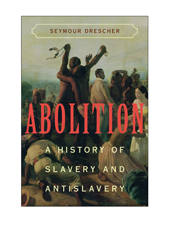Book contents
- Frontmatter
- Contents
- Preface
- PART ONE EXTENSION
- PART TWO CRISIS
- 4 Border Skirmishes
- 5 Age of the American Revolution, 1770s–1820s
- 6 Franco-American Revolutions, 1780s–1820s
- 7 Latin American Revolutions, 1810s–1820s
- 8 Abolitionism without Revolution: Great Britain, 1770s–1820s
- PART THREE CONTRACTION
- PART FOUR REVERSION
- Index
- References
8 - Abolitionism without Revolution: Great Britain, 1770s–1820s
Published online by Cambridge University Press: 04 August 2010
- Frontmatter
- Contents
- Preface
- PART ONE EXTENSION
- PART TWO CRISIS
- 4 Border Skirmishes
- 5 Age of the American Revolution, 1770s–1820s
- 6 Franco-American Revolutions, 1780s–1820s
- 7 Latin American Revolutions, 1810s–1820s
- 8 Abolitionism without Revolution: Great Britain, 1770s–1820s
- PART THREE CONTRACTION
- PART FOUR REVERSION
- Index
- References
Summary
As we have seen in the cases of North America, the Caribbean, Latin America, and Continental Europe, the boundaries between slavery and antislavery in most of the Atlantic world appeared to shift as a result of unforeseen and unintended outcomes of violent struggles fought for other purposes. Within one nation, however, the boundaries shifted in a deliberative process matched only in one corner of the northern United States. Britain also experienced enormous vicissitudes in dealing with its overseas slave systems during the two generations after 1775. In the first decade of that period (1775–1783), the imperial power with the world's largest and most productive slave system lost control of half of it. In the middle decades of that period (1794–1814), the Caribbean remainder of that slave system was first threatened and then enlarged. On the eve of the post-war peace settlement with Europe, the British Empire again ruled over more slaves than it had at the outset of the American Revolution.
In 1814, Patrick Colquhoun estimated Britain's imperial slave population at 1.15 million, consisting of 634,000 in the British West Indies, 372,000 in conquered Caribbean colonies and 108,000 in conquered Asian colonies and dependencies. Even setting aside India, the British institution encompassed a slave population equal to those of the United States and more than those in Brazil. The trajectory of Britain's policy toward slavery was not primarily dictated either by the loss of its North American slave sector or the later dramatic threats to some Caribbean islands in the mid-1790s.
- Type
- Chapter
- Information
- AbolitionA History of Slavery and Antislavery, pp. 205 - 242Publisher: Cambridge University PressPrint publication year: 2009
References
- 1
- Cited by



